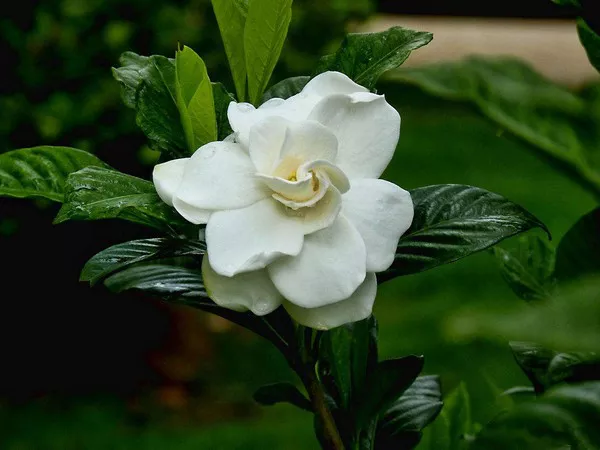Flowers have been an integral part of human culture for centuries, often used to express emotions, convey messages, and symbolize various aspects of life. Among the numerous floral species with symbolic meanings, the camellia flower holds a prominent place. In this article, we will delve into the captivating world of camellia flowers, exploring their symbolism, cultural significance, and historical associations.
The Camellia Flower: An Overview
The camellia flower belongs to the genus Camellia, which comprises around 250 species, with Camellia japonica and Camellia sinensis being the most well-known. Originally cultivated in East Asia, camellias have spread across the globe, enchanting people with their beauty and intriguing symbolism.
The Symbolism of Camellia Flowers
1. Love and Affection
Camellia flowers, especially the pink and red varieties, are often associated with love and affection. In the language of flowers, a red camellia is a symbol of deep love, while pink camellias express longing and admiration. These blooms have frequently been used in romantic contexts, expressing heartfelt emotions and deep connections between individuals.
2. Gratitude and Appreciation
Beyond romantic love, camellias also symbolize gratitude and appreciation. Gifting someone a bouquet of camellias can convey sincere thanks and a sense of recognition for their kindness or support. In certain cultures, presenting a white camellia indicates admiration and gratitude, making it a popular choice for expressing appreciation.
3. Faithfulness and Longevity
Camellias are often associated with loyalty, faithfulness, and long-lasting devotion. These qualities are often attributed to the longevity of the camellia flowers, which can bloom for many years if well cared for. As a result, camellias are commonly used in wedding bouquets and decorations, symbolizing the hope for a strong and enduring marriage.
4. Perfection and Excellence
Due to their immaculate appearance and flawless petals, camellias also symbolize perfection and excellence. This symbolism is particularly prevalent in Japanese culture, where the flower is revered for its beauty and used as a motif in art, poetry, and even tea ceremonies.
Cultural Significance of Camellia Flowers
1. Japan: The Enchanting “Tsubaki”
In Japan, the camellia flower, known as “tsubaki,” holds a special place in the hearts of people. With its elegant appearance and cultural significance, the tsubaki symbolizes the divine, and it is associated with the Shinto goddess Amaterasu. Additionally, samurais admired the flower’s grace and incorporated its symbolism into their code of ethics, embracing virtues of loyalty, courage, and honor.
2. China: The Symbol of Eternal Love
In China, the camellia is a symbol of eternal love and devotion. It is often associated with the love story of a young couple, the wealthy scholar Lin Gensheng, and his lover Lan Caihe. Their love remained pure and steadfast even after death, and camellia flowers bloomed in memory of their affection.
3. Korea: The Emblem of Spring
Korea celebrates the camellia as a harbinger of spring, representing renewal, growth, and prosperity. The flower’s vibrant colors are showcased during the Camellia Flower Festival, where people come together to enjoy the beauty of nature and partake in various cultural activities.
Historical Associations
1. Camellias in Art and Literature
Throughout history, camellia flowers have left their mark in art and literature across cultures. In China and Japan, artists often depicted camellias in their paintings, symbolizing love, beauty, and the transient nature of life. Notably, the famous Chinese opera “The Camellia Lady” immortalizes the flower’s symbolism in the realm of performing arts.
2. Camellias and the Victorian Language of Flowers
In the Victorian era, flowers were assigned specific meanings, and camellias played a significant role in this language of flowers. Red camellias were used to express deep love, while white camellias were associated with adoration and loveliness. Understanding this floral language allowed individuals to communicate sentiments and emotions discreetly.
Varieties of Camellia Flowers
Camellia flowers come in various shapes, sizes, and colors, providing an extensive range of choices for admirers and gardeners alike. Some popular varieties include:
Camellia japonica: Featuring large, vibrant blooms, this species is a classic favorite.
Camellia sasanqua: Known for its early blooming and fragrant flowers, it adds elegance to gardens.
Camellia reticulata: With stunning, oversized flowers, it is a prized ornamental variety.
Conclusion
In conclusion, camellia flowers hold a rich tapestry of meanings and cultural significance that has captivated hearts for generations. From symbolizing love and admiration to embodying loyalty and excellence, these blooms transcend cultural boundaries and continue to enchant people worldwide. As we immerse ourselves in the language of camellias, we discover not only the beauty of the flower itself but also the profound emotions and values they represent—a testament to the enduring power of nature’s most exquisite creations.


